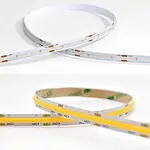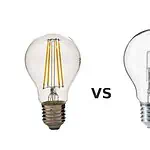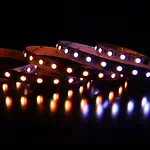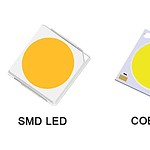While purchasing any floodlights, the matter of beam angle may confuse you. To clear up this confusion, you should know about the angular configuration of different lighting types. Asymmetric and symmetric lighting are the most common types of LED lighting. And they play a crucial role in creating optimum lighting effects.
The main difference between asymmetric and symmetric lighting is their direction of light flow. Asymmetric lighting emits light targeting a particular approach. Besides, it reduces light pollution and unwanted glare. But symmetrical lighting extends the light beams to every direction equally. Plus, it wastes light and creates intentional and unintentional glaring.
Apart from these, you should know many more facts when choosing between asymmetric and symmetric lighting. In this article, I’ve discussed the pros, cons, and uses of these two lighting techniques. So, continue reading to learn more-
What Is Asymmetric Lighting?
Asymmetric lighting focuses on a specific area. It has a reflector that works as a mirror to concentrate the light beams without spreading in all directions. That is how it eliminates unwanted light glare and reduces light pollution. And the finest examples of asymmetric lighting are street lamps, stadium lights, lights in the theater, etc.
Asymmetrical Lighting: Historical Background
The first asymmetric light fixture appeared in the 1960s. The primary intention of this invention was to create even lighting on the surface. And after many modifications, today asymmetrical lights are widely used for many purposes.
What Is Symmetric Lighting?
Symmetric lights are suitable for illuminating large areas. It spreads evenly in all directions without concentrating on a specific region. And so, symmetric lighting is recommended for outdoor spaces and accent lighting. Plus, you can also use it for indoor and garage lighting.
Differences Between Asymmetric Lighting And Symmetric Lighting
The differences between asymmetric and symmetric lighting are as follows-
| Asymmetric Lighting | Symmetric Lighting |
| Asymmetric Lighting enlights a specific area in a definite direction. | Symmetric lighting spreads in all directions equally. |
| This lighting is ideal for focusing on a small area. | In illuminating a large area, symmetric lighting works best. |
| Unintended glaring is reduced with asymmetric lighting. | Symmetric lighting causes intended and unintended glare. |
| Asymmetric lighting prevents light pollution. | This lighting causes light pollution. |
| This lighting produces a narrow beam angle. | A wider bim angle is created in Symmetric lighting. |
| Such lighting is an effective solution for the workplace. | Symmetric lights are adequate for general lighting. |
| Asymmetric lighting reduces eye strain. | As symmetric lighting produces unnecessary glaring, it causes eye strain. |
| The brightness of the light is different in different directions. | Light brightness is equal in all directions. |
| Asymmetric lights are energy-efficient. | Such lighting wastes energy. |
| Nearly no backlight is produced in asymmetric lighting. | Symmetric light creates backlighting. |
| Best For:Focusing on a specific region Workspace and street lighting | Best For:General lighting of large areaAccent lighting |
Asymmetric Lighting Vs Symmetric – Which One Is Better?
Let’s compare asymmetric and symmetric lighting to find the better one-
- Asymmetric light focuses on a particular area without illuminating the unwanted regions. Thus, it prevents light pollution. Meanwhile, symmetric lighting spreads the light ray to a large extent. It thus enlightens the unintended areas causing light pollution.
- Symmetric lighting glare causes eyestrain. But asymmetric lights only glare at the directed angle. So it reduces unwanted glaring and does not cause stress on the eye.
- Asymmetric lighting has a reflector to produce more concentrated light with the least energy usage. But, symmetric lighting wastes energy on lighting up the whole room where it is not required. So, it is less energy-effective than asymmetric lighting.
- Symmetric lights are suitable for lighting up a large area. But asymmetric only focuses on a particular site. So, it is not ideal for illuminating large areas.
So, both the illumination is good in their particular sectors. Asymmetric lighting can better direct the light source to a specific region. Yet, symmetrical lighting is best for general lighting or ample illuminating space.
But considering the cost-effectiveness and glare reduction, asymmetric lighting is somehow better than symmetric lighting. Why so? Let’s understand the matter creating a situation-
Suppose your exam is knocking at the door, and you must prepare well by studying all night. And in such a situation, lighting the entire room should disturb others to sleep. But think of using a desk lamp with asymmetrical lighting that focuses only on your books. So you can study without disturbing anyone around since it will not create any unwanted glaring. Plus, it saves your electricity bill. That is why asymmetric light is a better option for specific lighting tasks.
Advantages Of Asymmetric Lighting
Asymmetric lighting is suitable for interior and exterior lighting. Besides, such lighting comes with a wide range of advantages. These are as follows-
Lighting A Particular Area
When intended to light a particular space, asymmetrical lighting is your best option. That is because it only focuses on the area that requires enlightenment. So, go for asymmetric lighting if you want to pop up any particular region of your room or space.
Prevents Light Wastage
Enlightening the unnecessary areas is a complete waste. So, asymmetrical lights illuminate only the part that requires lighting. So, no light pollution takes place in such lighting.
Limited Light Source
Asymmetrical lighting creates narrow beams to illuminate an intended area. Plus, there is no back blow of light. Instead, it uses minimal energy for enlightening. Thus, it eradicates the need for extra lighting.
Cost-Effective
Asymmetrical lighting reflects light in a fixed direction. Thus it produces more concentrated light by using less energy. So, asymmetrical lighting benefits you by saving your electricity bills.
Disadvantages Of Asymmetric Lighting
Besides these advantages, asymmetric lighting also comes with a few drawbacks. These are-
- Asymmetrical lighting is not suitable for general lighting. Instead, it is intended for specific visual tasks.
- As no backlight is produced in the asymmetric lighting, the other half remains dark. So, it needs adequate lighting to work around the entire room.
So, these are the disadvantages of asymmetric lighting. So, before installing it for your lighting project, keep these points in mind.
Where To Use Asymmetric Lighting?
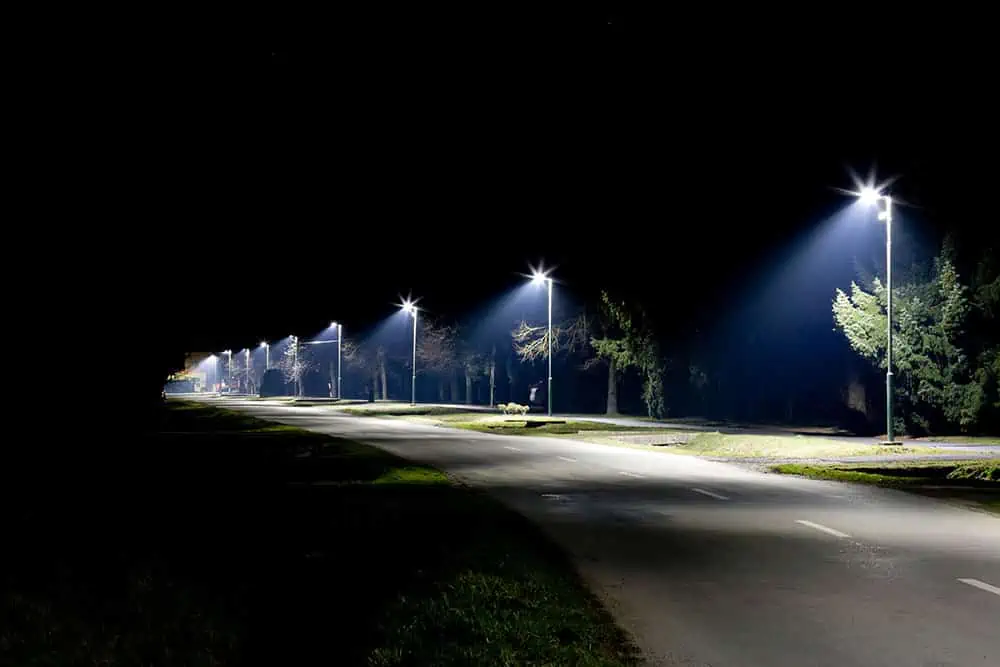
After knowing all these benefits of asymmetric lighting, you may wonder where to use them. You can use asymmetrical lighting in open or closed spaces. Yet, here are a few common uses of asymmetric lighting-
Workstation
Asymmetric lighting is excellent for directing lights to a specific area. That is why they are great for enlightening the workstation—for example- office table, study table, cooking station, etc.
Stadium
In lighting the stadium, an asymmetric light source works excellently. Because they only focus on the playing ground allowing the audience to watch the match easily. Thus, with asymmetrical lighting, the stadium’s audience will avoid unexpected light glaring issues.
Street
Streetlights are the most common example of asymmetric lighting. In roads, asymmetric lights are used to enlighten specific road zones. Thus, it reduces light pollution.
Theatre
In the theater, only the stage is illuminated, keeping the rest of the area dark. And for such lighting conditions, we use asymmetric lighting in the theater. It focuses only on the platform instead of illuminating the entire hall.
Besides these, asymmetrical lights are suitable for many other purposes. For example, you can use them to highlight any room corner. Thus, they can add an aesthetic look to your interior decorations.
Advantages Of Symmetric Lighting
The advantages of symmetrical lighting are as follows-
Lighting Large Spaces
Unlike asymmetric lighting, symmetric lighting does not concentrate on a particular area. Instead, it spreads the light beam in all directions equally. That is why symmetric lighting is suitable for lighting large spaces.
Even Light Flow
Symmetric lighting does not focus light beams in a specific zone. Instead, it flows evenly. So, they are great for regular lighting uses.
Supports Visual Activities
Symmetric lighting illuminates the entire room that supports proper visualization. Thus it allows working around the whole room with the adequate light flow in every corner.
Disadvantages Of Symmetric Lighting
The disadvantages of symmetric lighting are as follows-
- Symmetric lighting causes intended and unintended light glare
- Causes eyestrain
- Light pollution occurs due to lighting in unwanted areas
- Not energy-efficient compared to asymmetrical lighting
So, you must know the drawbacks of symmetrical lighting before installing it.
Where To Use Symmetric Lighting?
Symmetric lights are the most used lighting in our day-to-day life. Here I’ve presented some common uses of symmetric lighting-
Large Open Spaces
It could be a fair or any outdoor event; symmetric lights are great for use in open spaces. Moreover, such lighting illuminates a large area, which is why it is widely used at functions or programs.
Storage Facilities
In storehouses, store boxes are packed up one after another. And in maintaining such congested areas, symmetrical lights are excellent for adequate visualization.
Open Car Parks
In open car parking areas, symmetrical lights are used to enlighten all the vehicles. So, you can identify your car from a distance among all the crowds.
Indoor Lighting
The lights we use in our bedrooms, living rooms, offices, shopping malls, etc., are generally symmetric. Such lighting is in-demand for regular usage as it illuminates the entire area of your room equally.
How to Identify Symmetrical And Asymmetrical?
You have already learned about symmetrical and asymmetrical lighting from the above discussions. But how to identify them? No worries, I’ve pointed out some techniques following which you recognize them-
Direction Of Light Flow
Symmetric light emits light in both forward and backward directions. But asymmetric light doesn’t produce light backward. So, when you find an even flow of light in all orders, identify it as symmetric lighting.
Beam Angle
The beam angle of symmetric lighting is broad and spreads on both sides equally. Meanwhile, asymmetric light spreads unequally, creating a narrow beam angle. So, by observing the angles, you can identify them.
Light Glaring
Symmetric lightings create intentional and unintentional glaring. That is because it lights up the entire area. So, the places where light is not required will trouble your eye. But it is asymmetric lighting when the light is directed only to a particular object/area and glaring only at that.
Dark To Light
Asymmetric lighting enlights a specific zone keeping surrounding areas in the dark. Thus, it creates a dark-to-light effect. But if the entire area is lightened up equally without any dark spots, it is symmetric lighting.
So, keeping these points in mind, you can identify symmetrical and asymmetrical lighting.
FAQs
Street or road lamps are the most common example of asymmetrical lighting. These lights create a narrow-angle to enlighten a particular part of the road. Thus, it assists you in driving safely on the streets at night.
Asymmetric flood lights emit light directly to the intended area. It concentrates the light at that specific spot without causing light pollution.
Yes, you can use symmetric lights outdoors. It enlights an ample area which is why it is used in lighting open car parks, outdoor events, etc.
No, recessed lights can be both symmetrical and asymmetrical. For example, placing the recessed light on the ceiling will emit symmetrical lighting. Again using a reflector, you can change the angle of the recessed lighting to a particular direction. Thus, recessed lights can be of both types.
The spotlights can be symmetrical or asymmetrical based on the light emission angle. It is a symmetrical spotlight if the angle of the spotlight is equal on both halves. Otherwise, it’s asymmetrical.
The angle at which an asymmetrical light source is pointed in a specific direction is called the asymmetric beam angle. The beam angle of asymmetrical lights is narrow in comparison to symmetric lighting.
Symmetric lighting produces direct and indirect glaring. That is why it creates eyestrain. So in that sense, it is harmful to your eyes.
The lights we usually use in our bedrooms illuminate the entire room. And the lights are evenly distributed in the room, so it is symmetrical
Conclusion
Asymmetrical and symmetrical lighting are excellent for indoor and outdoor lighting purposes. Yet they have many differences. For example, symmetrical lights emit evenly, which is best for enlightening larger spaces. And asymmetrical lights are suitable for focusing on small areas. Besides, they are also cost-effective.
So, decide the type of lighting according to your requirements. Yet, whatever your choice is, LEDYi can help you. We provide high-quality LED strips and LED neon flex with customizable beam angles. Besides, all our products are lab-tested and certified. So, for the best lighting for your project, contact us ASAP!



